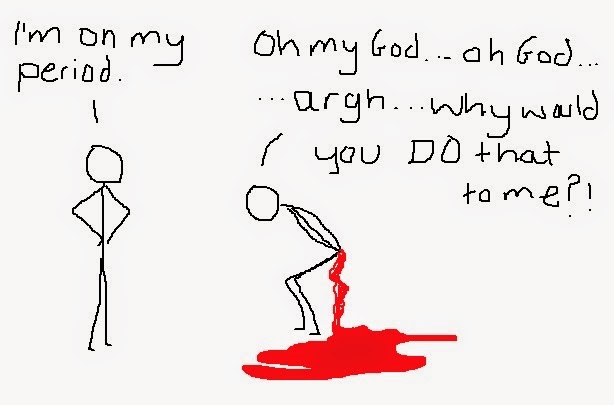1) "When Deborah got to her doctor's office, her blood pressure and blood sugar was so high, her doctor was amazed she hadn't had a stroke or heart attack while we were in Clover." (297)
This is foreshadowing Deborah's eventual death because of the multitude of health problems that she had. Though she has many health problems, she is much more focused on honoring her mother at conferences and learning as much as she can about her mother's cells.
2)"But we both knew the break from HeLa wouldn't last--" (297)
There was a brief time when Rebecca and Deborah were not researching Henrietta's medical files, but it appears that they can't take a "break" from the HeLa life, seeing as they are surrounded by people angry about not receiving profits from the cells, or people who pester them for more information on HeLa cells.
3) "...everything else seemed to be spiraling in the wrong direction." (298)
At this point of the story, Deborah's son was arrested, and family tension soared between Deborah and her brothers. They even were against Deborah speaking at the conferences, but Deborah insisted on honoring her mother. Soon after, the bombing in 9/11 occurred and the conferences were canceled.
4) "About an hour into the service Deborah, realized she couldn't move her arm." (299)
This is the climax of Deborah's health problems. She was at the congregation and then had a stroke. At the brink of death, her grandson Davon slapped her face to keep her alive, which saved her. Still, Deborah was unfazed by her health crisis and still wanted to go to school to take her tests.
5) "Better than since before I found out they took my mother cells. I feel so light, you know? It lifted my burden." (301)
The Lack's journey with Rebecca Skloot helped them seek closure with their mother's cells and the truth. Instead of being angry and resentfully seeking money from John Hopkins, they wanted to learn about HeLa cells to feel closer with their mom. They became proud of the cells' contributions and let go of their anger.
6) "Cause there's nothin to be scared about with my mother and then cells. I don't want nothin to keep me from learnin no more." (302)
In this quote, Deborah states that from this point forward, she will dedicate her life to learning, something inhibited by HeLa harassment, pregnancy, and early marriage. The only thing in Deborah's way now if her health, something she aims to improve through her education.
7) "It's too late for Henrietta's children . . . This story ain't about us anymore. It's about the new Lacks children." (302)
Though Deborah was so excited to take courses and have a formal education, she realized that her time is over. There has been too much damage done to her in her old age and she can't continue studying. All she wishes now is for the children of the next Lacks generation to become educated.
8) "Clover was gone." (305)
The town that Henrietta and her family grew up in was nothing but a corpse of a town. The town, and it's history with Henrietta, has disappeared. None of the Lacks family knew about it until Skloot informed them. When this town went down, the members of the Lacks family began suffering from unfortunate events.
9) "Death just following us and this story everywhere we go" (306)
In the 2000's, Gary had died of a heart attack, Cootie's mother died for unknown causes, Fred died from throat cancer, Day died of stroke, and Cootie killed himself from all the trauma. This generation of Lack's was quickly disappearing.
10) "I really believe she's up in heaven, and she's doin okay, because she did enough suffering for everyone down here" (309)
Deborah has a bright way of facing death. Instead of grieving over not being on earth anymore, she rejoices at the thought of finally meeting her mother. She makes the point that Henrietta was a selfless woman who suffered in her living so people would be better after her death.














